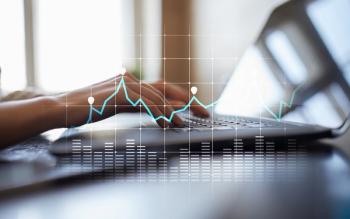
AJMC Commentary: U.S. Needs Evidence-Based Guidelines for Scheduling Follow-up Doctors' Visits
Are Doctors' Visits Set by Evidence or Habit? Extending Follow-ups Could Save Billions, Authors Say
FOR IMMEDIATE RELEASE JANUARY 23, 2014
AJMC Commentary: U.S. Needs Evidence-Based Guidelines for Scheduling Follow-up Doctors’ Visits
Are Visits Set By Need or By Habit? Extending Follow-ups Could Save Billions, Authors Say
PLAINSBORO, N.J. — The time has come for evidence-based guidelines for scheduling follow-up visits with doctors, a change that could trim billions from health care costs, according to the authors of a commentary published this month in The American Journal of Managed Care.
Despite nearly 1 billion annual outpatient follow-up visits in the United States, there’s not much data documenting the evidence base for follow-up intervals for costly chronic conditions. The current commentary seeks to establish follow-up intervals to reduce healthcare costs and improve access.
Considering that a major portion of outpatient office visits are follow-ups, the study considered the following questions: Are the visits and their time frames determined scientifically or by convenience and habit? Is there evidence to support a physicians practice patterns? And, if there is evidence to support practice patterns, do physicians adhere to the guidelines?
“Evidence-Based Guidelines to Determine Follow-up Intervals: A Call for Action,” by Emilia Javorsky, MPH; Amanda Robinson, MD; and Alexa Boer Kimball, MD, MP, followed PRISMA (Preferred Reporting Items for Systematic Reviews and Meta-Analyses) guidelines along with a PubMed database search for relevant studies for the top five chronic conditions with the highest outpatient visits in 2010 (mental disorders, back problems, arthritis, chronic obstructive pulmonary disease/asthma, hypertension), which cost an estimated $281 billion. For the full commentary, click
The authors modeled hypertension, which accounted for $47.4 billion in overall expenditure, and $13.03 billion in outpatient visits. Using the Medicare national allowable billing amount of $65.30 (Current Procedural Terminology code 99213 visit), they determined that an extension of the follow-up visit from six to seven months would result in a 15 percent decrease in visits per year, saving nearly $682 million. An extension to nine months would trim visits 34 percent, saving $1.5 billion, while an extension to annual visits would reduce visits by half and save $2.3 billion. The authors also predicted accurate blood pressure assessment and therapy adjustments.
Thus, the study concluded that evidence-based follow-up intervals must be established on healthcare outcomes to help reduce healthcare costs per person and improve access without compromising or restricting care.
CONTACT: Nicole Beagin or Mary Caffrey (609) 716-7777 x 131 or x 144
Newsletter
Stay ahead of policy, cost, and value—subscribe to AJMC for expert insights at the intersection of clinical care and health economics.







































